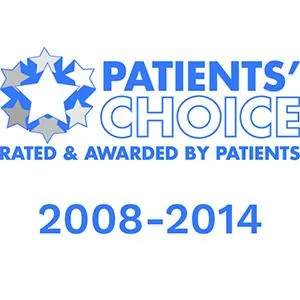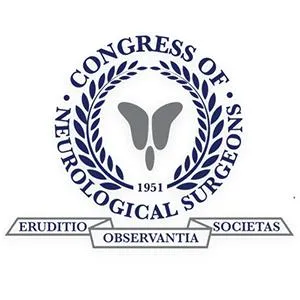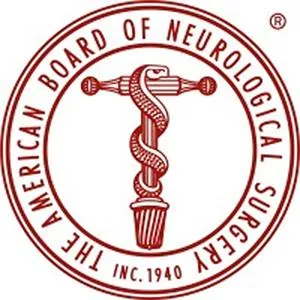Minimally Invasive Surgery
Minimally Invasive Intradiscal Procedures
Targeted Disc Surgery Through Tiny Openings

Over 100 5-Star Reviews!

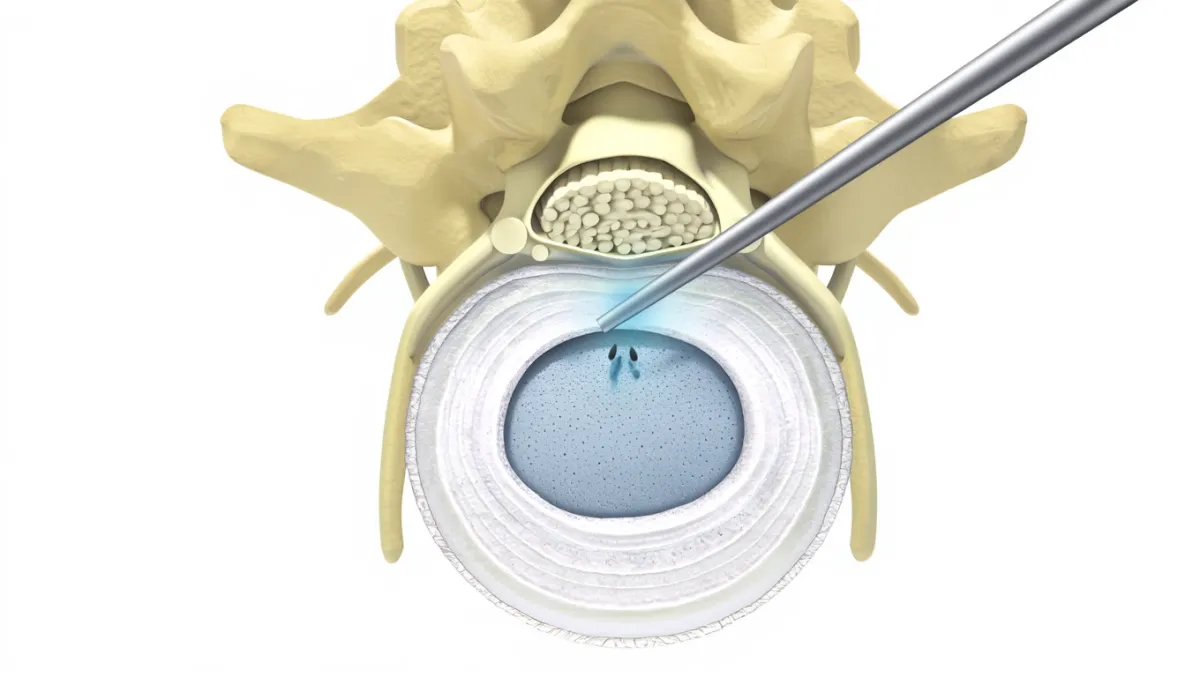
What Are Intradiscal Procedures?
In simple terms: These are surgeries that treat the inside of the disc (the “cushion” between bones) through a tiny incision, often using a needle or tube.
Scientifically: Intradiscal procedures involve accessing the nucleus pulposus and/or annulus fibrosus using minimally invasive techniques to reduce pressure, seal tears, or deliver biologics, with the goal of relieving radicular pain and/or discogenic back pain.
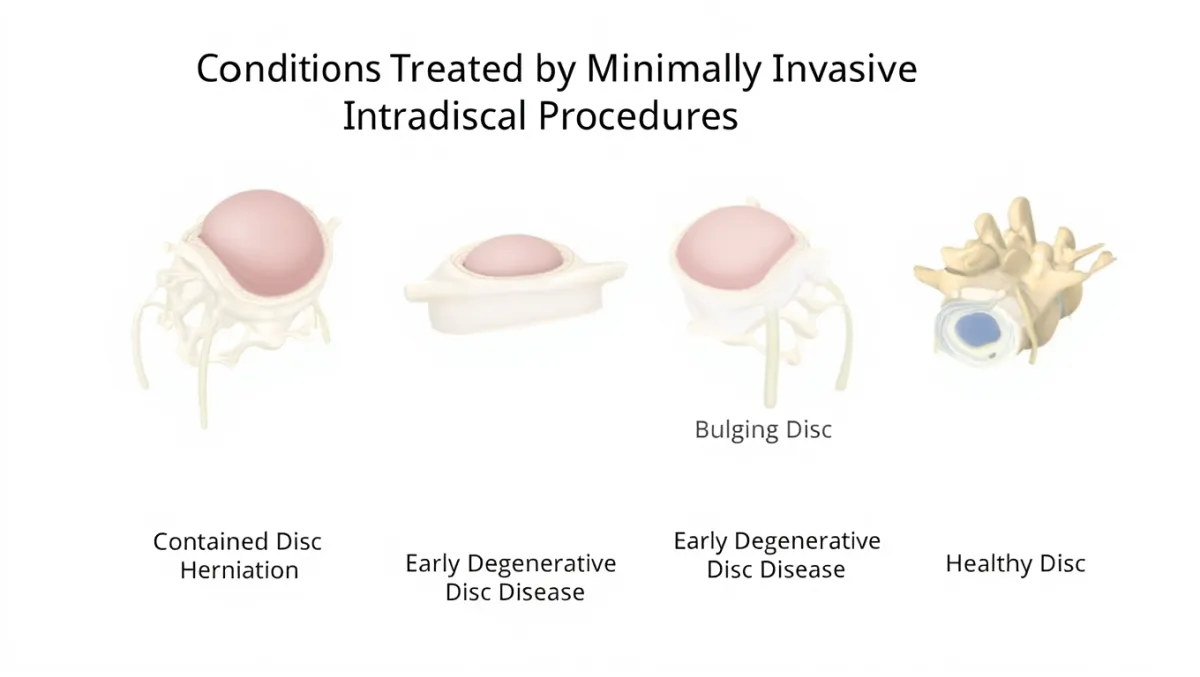
Conditions Treated
Contained herniated discs (disc bulges not fully ruptured)
Annular tears causing discogenic pain
Degenerative disc disease with disc height loss or internal disruption
Chronic low back pain linked to a specific painful disc
Types of Minimally Invasive Intradiscal Procedures
1. Intradiscal Electrothermal Therapy (IDET)
How it works (simple): A heated catheter seals small tears in the disc wall, reducing nerve irritation.
How it works (science): A flexible catheter is placed into the annulus fibrosus under fluoroscopic guidance; heat (90–100°C) denatures collagen, contracts fibers, and coagulates nociceptive nerve endings.
2. Percutaneous Disc Decompression (Nucleoplasty / Discoplasty)
How it works (simple): A special probe removes or shrinks disc material to relieve nerve pressure.
How it works (science): Coblation, laser, or mechanical aspiration removes a small portion of nucleus pulposus, lowering intradiscal pressure and decompressing nerve roots.
3. Intradiscal Biologic Injections (Emerging)
How it works (simple): Concentrated biologic material (e.g., PRP or stem cells) is injected into the disc to promote healing.
How it works (science): Biologics modulate inflammation, promote extracellular matrix synthesis, and may improve disc hydration and function.
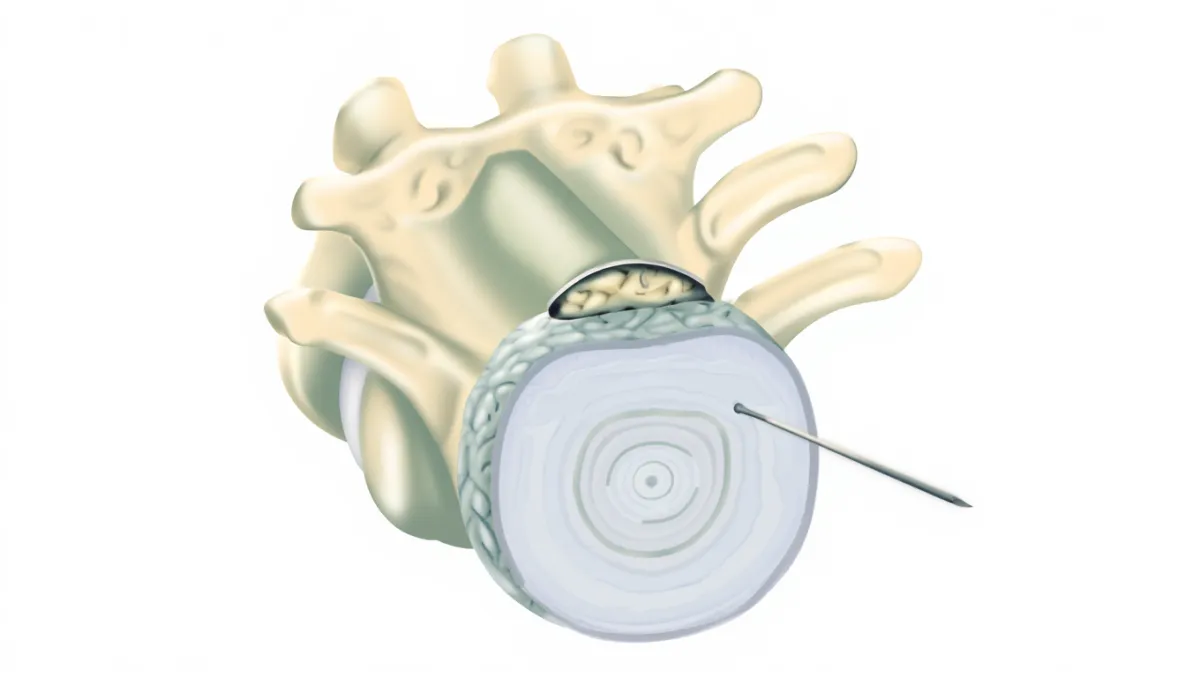
The Procedure: Step by Step
Plain-English overview
Anesthesia: Usually local anesthesia with sedation (outpatient).
Small incision/needle access: Using X-ray guidance, we place a needle or small tube into the disc.
Treatment: Depending on the procedure, heat, energy, or biologics are applied.
Closure: No stitches needed in most cases; a bandage is placed.
Recovery: Patients go home the same day, usually walking out of the clinic.
Surgeon-level detail
Positioning: Prone or lateral; fluoroscopy ensures precise level targeting.
Access: 18–19 gauge spinal needle or small cannula advanced into nucleus pulposus/annulus.
Therapy delivery:
IDET: Catheter advanced circumferentially; heating cycle performed.
Nucleoplasty: Coblation wand activated to ablate and remove nucleus material.
Biologics: PRP/stem cell concentrate injected under sterile technique.
Closure: Sterile dressing; no sutures.
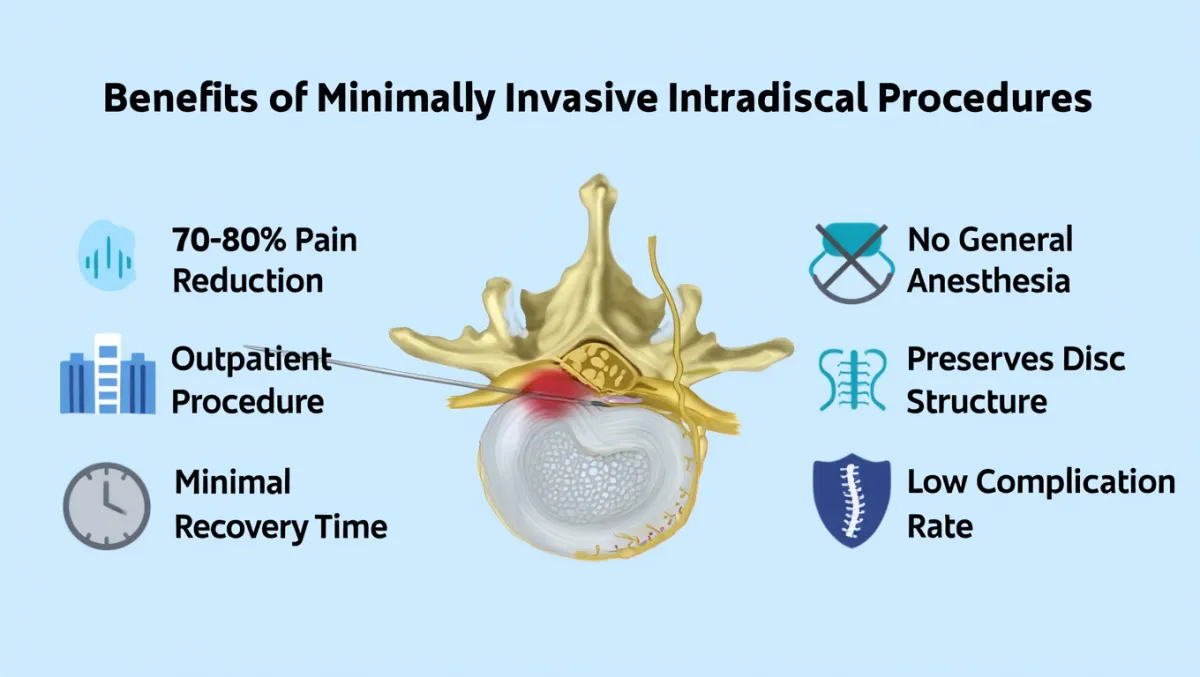
Benefits
Outpatient procedure; quick recovery
Smaller incision than open surgery
Preserves spinal stability
Relief from pain in properly selected patients
May delay or prevent the need for fusion
Risks & Limitations
Infection, bleeding, nerve irritation (rare)
Discitis (serious but uncommon infection risk)
Effectiveness varies; best for contained herniations, not large extrusions
Not appropriate for severe stenosis, instability, or advanced degeneration
Recovery Timeline
Day of procedure: Up walking, home same day
Week 1–2: Light activity; mild soreness possible
Weeks 2–6: Gradual return to work and exercise
3–6 months: Maximal benefit usually observed as tissue heals and inflammation subsides
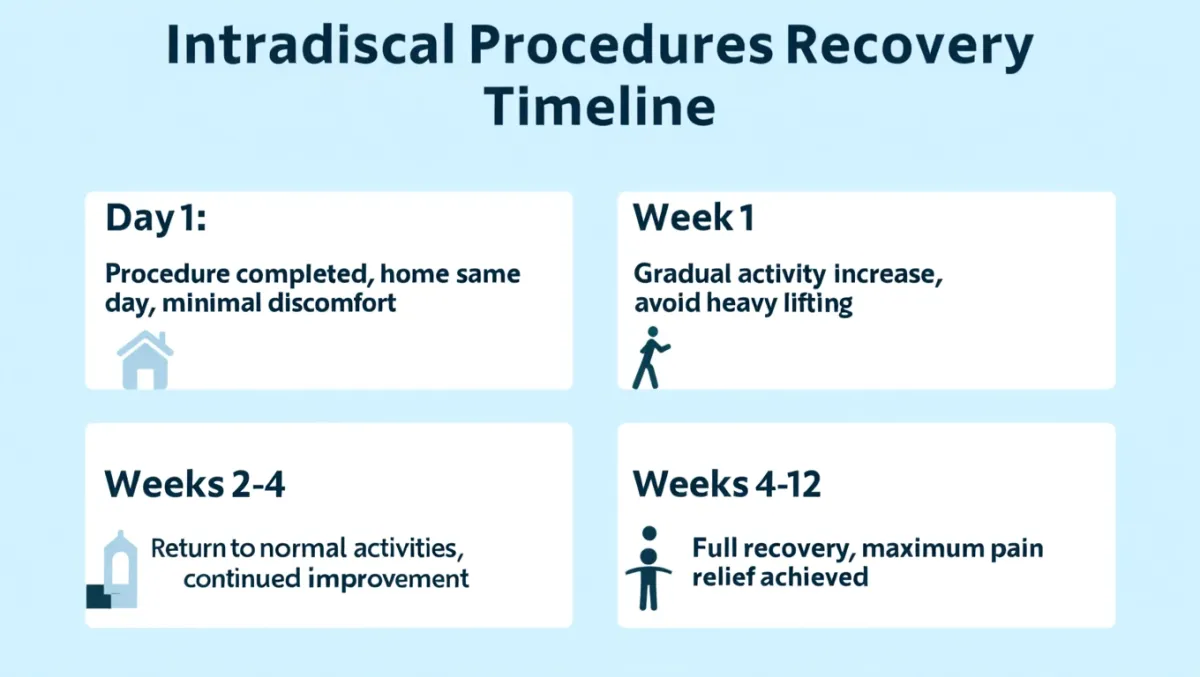
Why Choose Desert Spine and Pain?
Expert patient selection – We only recommend intradiscal procedures when they’re proven beneficial for your condition
Neurosurgeon-led care – Dr. Greenwald ensures safe, precise, evidence-based treatment
Comprehensive options – From non-invasive care to injections to advanced MIS surgery, all under one roof
Compassionate guidance – We explain everything clearly, reducing anxiety about new or advanced techniques
Frequently Asked Questions
Are intradiscal procedures the same as spinal fusion?
No. Intradiscal procedures preserve motion by treating the disc itself, whereas fusion permanently joins two bones together.
How long does the relief last?
It varies. Some patients experience years of relief, while others may eventually require additional procedures or fusion.
Is recovery faster than with open surgery?
Yes. Most patients return to work within days to weeks, compared to months for traditional surgery.
Are biologic injections (PRP, stem cells) proven?
Research is ongoing. Some patients benefit, but results are variable, and not all insurance covers these treatments.
How does Desert Spine and Pain approach intradiscal surgery differently?
We combine advanced MIS tools, strict patient selection, and neurosurgical precision to maximize results safely.




Dr. David L. Greenwald, MD
Neuro-Spine Surgeon
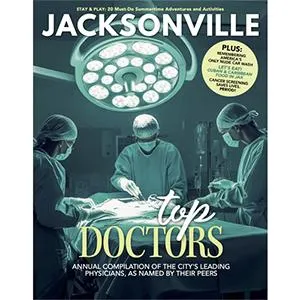

Call Now!
Desert Spine and Pain
A Spine Specialist is standing by.
Relief is just a phone call away!
Available Around the Clock.
Phone: (602) 566-9500
Email: [email protected]
Contact Us

Schedule a Consultation
If you’re living with chronic back pain caused by a damaged or degenerative disc, minimally invasive intradiscal procedures may offer the relief you need—without extensive surgery or long recovery times. Dr. Greenwald and his caring team will assess your condition, explain your treatment options, and develop a plan tailored to your specific needs. Every step you take toward advanced, minimally invasive care brings you closer to comfort, mobility, and a better quality of life. Schedule your consultation today and take the first step toward lasting relief.
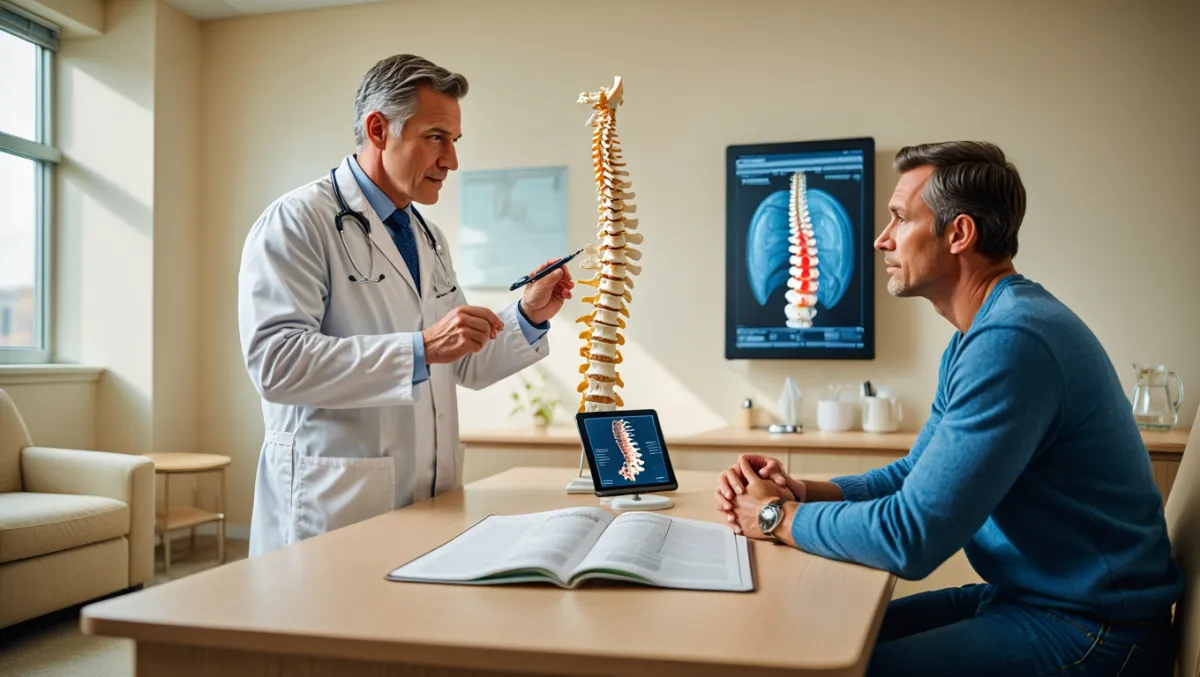
Voted Best Spine Doctor
Over 30 Years Experience in Orthopedic & Neuro Spine Surgeries.

Dr. David L. Greenwald, M.D., F.A.C.S.
Neurosurgeon | Spine Surgeon | Regenerative Medicine
Dr. David L. Greenwald, MD, FACS, is a board-certified spine surgeon specializing in minimally invasive intradiscal procedures, which are designed to treat painful disc conditions without the need for large incisions or traditional open surgery. These advanced techniques—such as intradiscal electrothermal therapy (IDET), biacuplasty, and regenerative injections—target damaged or degenerated discs directly to relieve pain, reduce inflammation, and restore function. By using specialized tools and image-guided precision, Dr. Greenwald minimizes tissue disruption, speeds up recovery, and helps patients return to their daily activities sooner. His expertise in these cutting-edge procedures has made him a trusted leader in minimally invasive spine care throughout South Florida.
Book your Spine Care Consultation Today!


Desert Spine and Pain
Patient Centered & Partner Focused
Quick Links
Resources
Connect With Us
© Desert Spine and Pain. 2025. All Rights Reserved. Sitemap





